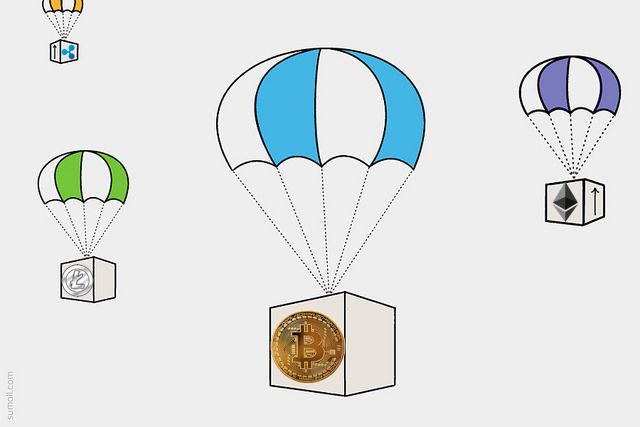What is an Airdrop?
The term shouldn’t be confused with the army definition . In the world of cryptocurrencies, an airdrop has a unique meaning. An Airdrop is a process in which developers of a project (often ICOs) give their very own token to crypto users. Airdrops could be seen as free samples of the crypto-shopping market.
Airdrops are sometimes carried out by unknown start-ups to increase the attention of their brand easily and quickly. The project is hyped and the crowd is happy, so at least the theory.
Why are Airdrops carried out?
Airdrops should not just used to construct a brand. There are different reasons why Airdrops are carried out:
To reward users : Token gifts are sometimes given out as a reward to users of a particular service for his or her loyalty. Binance * or KuCoin, both crypto-to-crypto exchanges, have done so in the past and are very likely to do so again in the future. Nevertheless, you don’t at all times get the tokens as a gift, generally you need to do something about it, for example, trade or buy and hold a certain amount of a cryptocurrency.
To Increase Decentralization : By distributing free tokens to numerous different users, they’re distributed all over the world, distributing cryptocurrencies in a decentralized manner. OmiseGo made an Airdrop for that cause. Since OmiseGo depends on a proof-of-stake system sooner or later, it’s essential that a large number of PoS validators take part within the network. By distributing it to a lots of thousands of Ethereum addresses, this has been and can be guaranteed.
To avoid bans : Facebook, Google and Twitter ban ads for cryptocurrencies . By Airdrops many parties could be reached and a brand could be constructed. As well as, governments are within the process of regulating cryptocurrencies . A proposed ICO project may (theoretically) circumvent the regulations by giving away tokens rather than selling them.
Hard Forks : Even a hard fork generally is a form of airdrop. However only if a brand new network or a brand new cryptocurrency arises with the hard fork. Examples are the Bitcoin & Bitcoin Cash Hard-Fork and the Ethereum & Ethereum Classic Hard-Fork.
How do you get Airdrops?
Automated Airdrop : Automated Airdrops are token gifts that you just obtain automatically. Nothing must be done for this, the developers automatically transfer the free tokens to your address. However, the address often needs a credit, that is, the address must be ‘activated’ with an insert.
Most are automated Airdrop token ERC-20 tokens that use the Ethereum Blockchain. Which means that you solely want an Ethereum Wallet with ether credits for most Airdrops . Typically Airdrops are distributed proportionally to all Ethereum addresses which have ethers.
Manual Airdrop : In some circumstances you need to be active yourself to get the tokens. On this case, the token is not actually given, because it in some form, for example, with social money (Like, Share, Tweet, etc.), paid or works.
Beware of scammers
People are exploited by fraudsters. Because greed feeds on the brain and airdrops can appeal to greed, scammers are attracted. And then it can happen quickly that you are being ripped off. You should therefore pay attention to the following things:
Never give away the private key : Nobody needs your private key to send you free tokens. With the private key you can access your assets and if someone asks for your private key, then you know that he wants to steal your cryptocurrencies. For Airdrops the public addresses are sufficient.
Never send money to someone : Airdrop should give you money and not the other way around. If you are required to send money first and then receive money, then you should quickly go for a break.
Review official sources : An Airdrop is publicly communicated by the development team or fans discuss it in groups. That’s why verified accounts, websites, social media, etc. should be checked before taking part in Airdrop.

